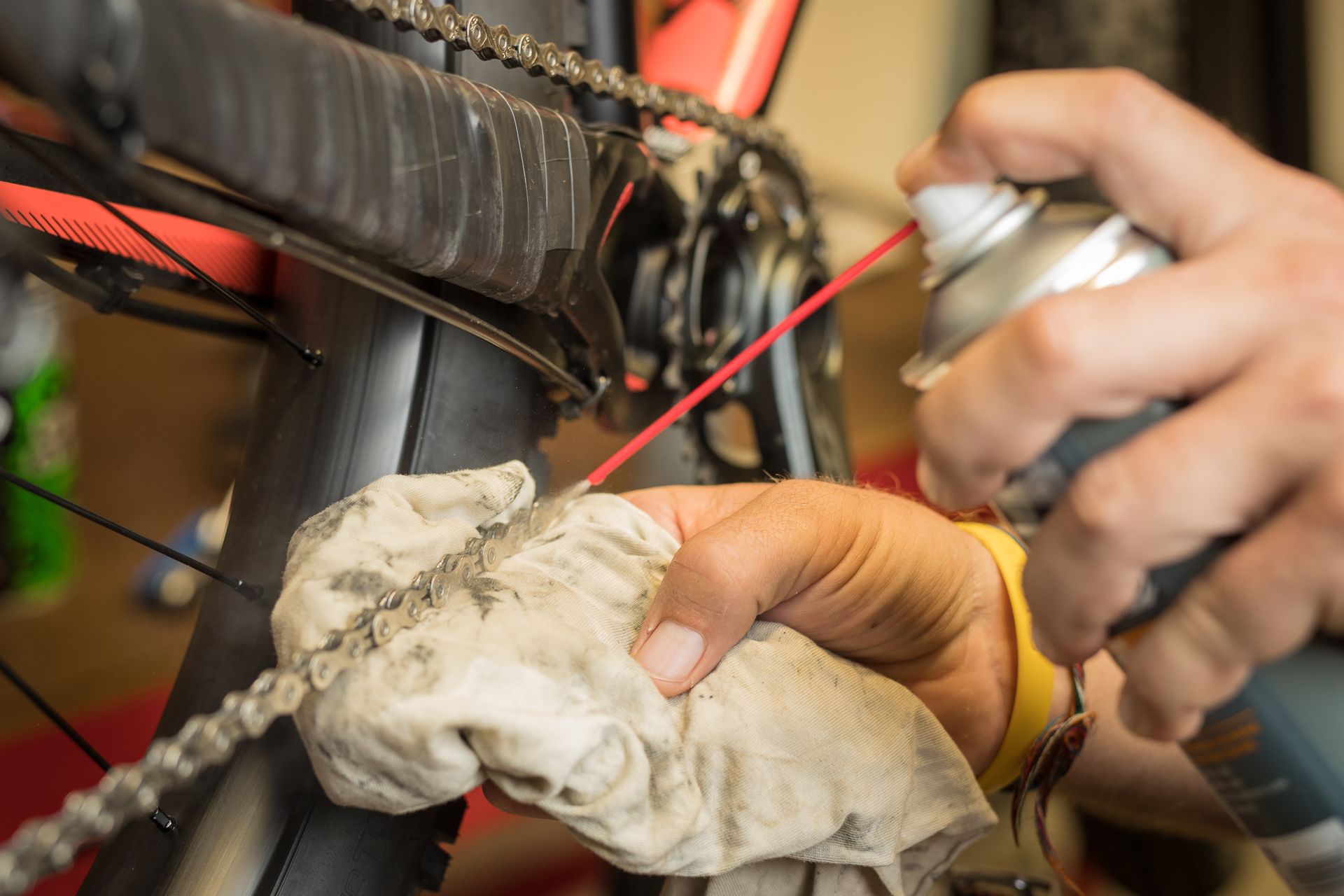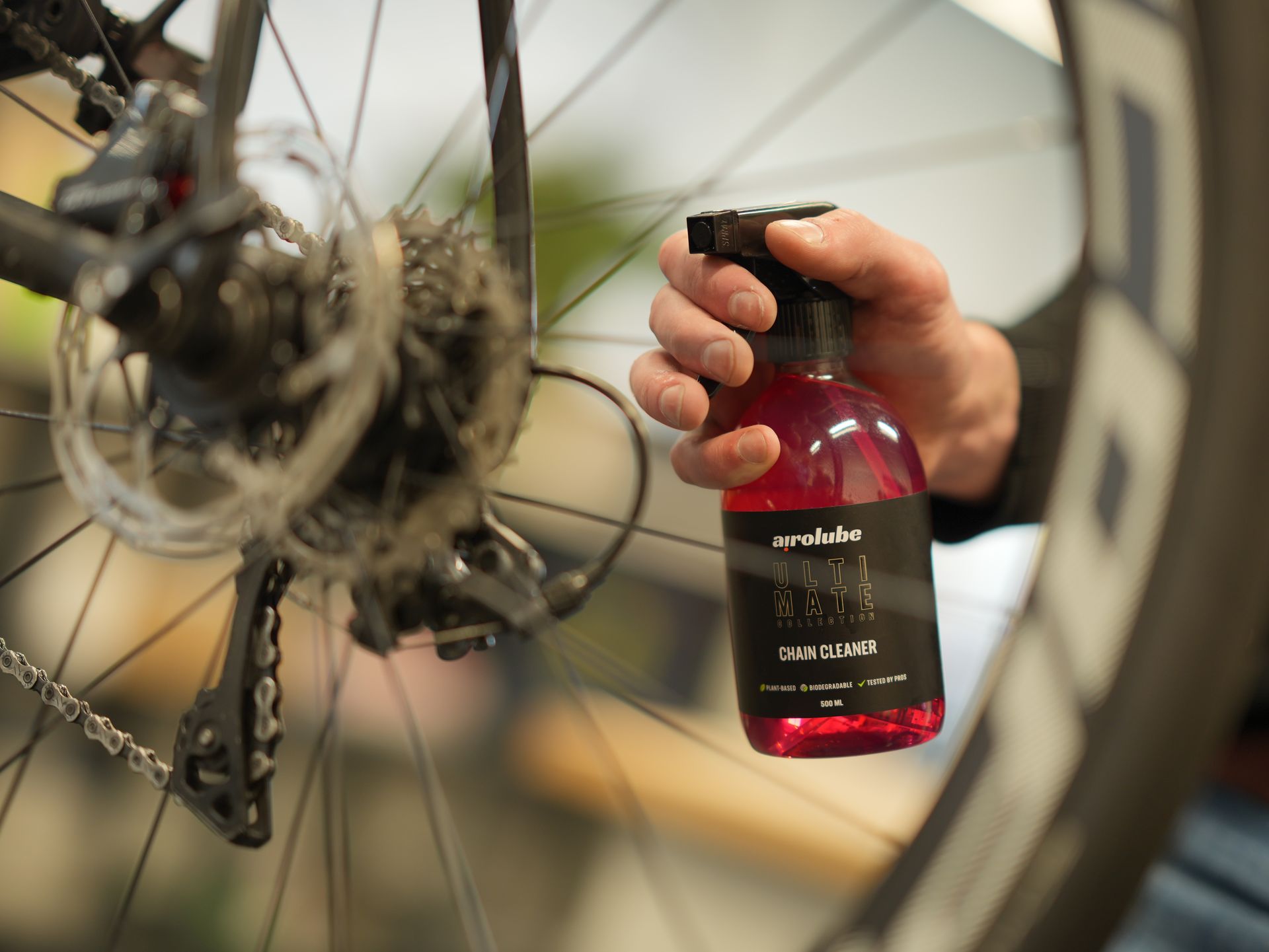Anyone who has browsed the Bike Care section in a bicycle shop knows the variety of maintenance products available in plastic bottles with triggers and spray cans. Both types of packaging come in different price ranges, volumes, and for various applications. However, there are some important aspects that might not be immediately apparent but are crucial for making an informed choice. In this blog, we explain how spray cans and trigger bottles work and why trigger bottles are often the better choice for the environment and safety.
The Disadvantages of Spray Cans
Although spray cans are widely used in our daily lives, they also have significant environmental drawbacks that cannot be ignored.

Environmental Impact
Spray cans contain propellants such as hydrocarbons (propane, butane) or compressed gases (nitrogen, carbon dioxide). Despite modern spray cans being designed with less harmful propellants like HFOs, they still impact the environment. The production and disposal of spray cans contribute to pollution and greenhouse gas emissions. Additionally, spray cans are difficult to reuse, and refilling is usually not an option, leading to more waste.
Safety Risks
Pressurized spray cans can be dangerous. Exposure to high temperatures can cause them to explode, posing a serious safety risk. Moreover, spray cans often need to be used in well-ventilated areas to avoid inhaling harmful fumes, making them less suitable for indoor use, especially in poorly ventilated spaces.
Inefficient Use of Product
The content listed on spray cans includes both the propellant and the product itself. This means that the active substance in spray cans often makes up only 50% or less of the listed content. This inefficient use of product means you get less active substance per milliliter in a spray can compared to a trigger bottle. This is not only more expensive but also less environmentally friendly.
The Advantages of Trigger Bottles
Trigger bottles have become indispensable in the world of packaging. From cleaning agents to gardening products, these handy bottles with a spray mechanism make it easy to apply liquids precisely where needed. But how do trigger bottles actually work, and why are they often the better choice?
Environmental Benefits
Trigger bottles are more environmentally friendly because they generate less waste. Many trigger bottles are designed to be reused. You can easily refill them with new liquid, reducing the need for new plastic bottles. Additionally, trigger bottles do not contain propellants that contribute to greenhouse gas emissions.
Safety
Trigger bottles are safer to use than spray cans. They are not pressurized, eliminating the risk of explosion at high temperatures. Moreover, many trigger bottles have a locking mechanism on the spray head, helping to prevent unwanted spraying and leaks, especially in households with children.
Actual Content
A key advantage of trigger bottles is that the content listed on the label is equal to the actual content. In spray cans, the listed content includes both the propellant and the product. This means that the active substance in spray cans often makes up only 50% or less of the listed content. You get more active substance per milliliter in a trigger bottle, making it more efficient and cost-effective.
Conclusion: Choose Environmentally Friendly Trigger Bottles
Trigger bottles offer a combination of environmental friendliness, safety, and efficiency, making them a preferred choice for both home use and commercial applications. The ingenious design of these bottles makes it easy to apply liquids precisely and effectively, simplifying any task. Additionally, with trigger bottles, you always get the full active content, unlike spray cans where a significant portion consists of propellant. Furthermore, trigger bottles are easier to reuse, and their recycling process is less complex than that of spray cans. So make the environmentally friendly choice and opt for trigger bottles!

